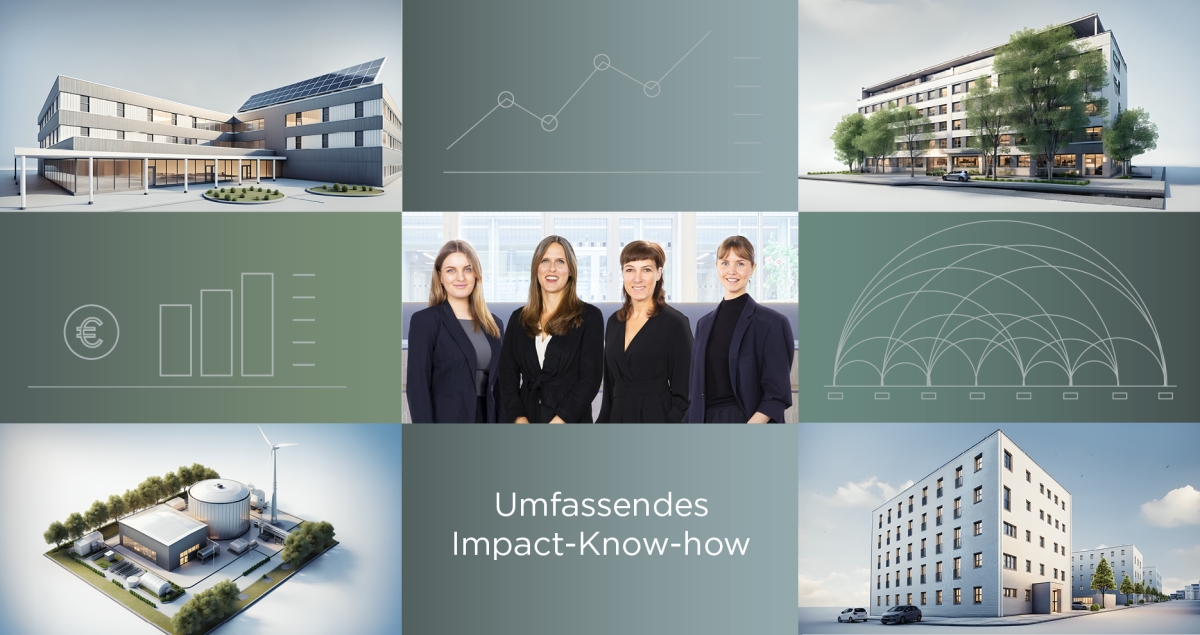What is Impact Investing?
The term ‘impact investing’ is used for a wide range of investment activities, but refers to an investment style that deliberately makes a demonstrable net-positive contribution to the socio-ecological transformation of the environment and society without losing sight of the financial return. Impact investing therefore differs from conventional sustainable investment strategies by focussing on real world outcomes.
Impact investing is based on three core criteria:
intentionality:
A clear impact objective and accountability based on robust evidence.
Asset and investor impact:
Real-world, significant and net-positive impact at company/asset level. Net-positive, significant impact of the investor on the asset impact.
Measurability:
Creating transparency about the quantified impact through indicator-based impact management and measurement (IMM).
The efficiency frontier of Harry Markowitz's classic modern portfolio theory captures the essence of the investment decision traditionally faced by investors in terms of expected return and risk tolerance. For impact investors, however, it remains an incomplete solution because the two-dimensional framework of risk and return contains no information about the social and environmental characteristics of the optimal portfolios or the assets within them.
Impact Investing:
the third dimension that is making a difference.
The concept of the efficient impact frontier builds a bridge between impact-related and financial considerations. The two-dimensional boundary of financial risk and return is thus expanded to include a third dimension of performance: impact.
A portfolio is on the ‘efficient impact frontier’ if it offers the greatest possible impact for a given risk-adjusted financial return. It thus provides a framework for integrated analysis and decision making that does not assume or depend on a universal relationship between impact and financial performance (i.e. trade-off by sacrificing return or no trade-off), thereby allowing investors to construct portfolios that optimise both impact and financial performance.
Based on the definition of the German Federal Initiative for Impact Investing, we differentiate between impact-aligned and impact-generating investment strategies in our fund products in order to ensure the greatest possible transparency and traceability for our investors.
| Impact-aligned investment | Impact-generating investment | |
| Intentionality | Intentionality | |
| Impact Measurement and Management | Impact Measurement and Management | |
| Significant, net-positive asset impact | Significant, net-positive asset impact | |
|
- |
Significant, net-positive investor impact | |
| Financial return | Financial return |
Our approach: focusing on impact


Impact investing is at the centre of our investment strategies.
We focus on real assets (real estate and infrastructure), because this asset class offers enormous potential for social and environmental impact. For example, sustainable buildings contribute to energy efficiency, promote social integration and create long-term positive social impact.
Integration of the impact concept into the investment cycle
From matching potential investments with our defined investment priorities up to the impact-oriented exit, we consistently integrate the idea of impact investing throughout our entire investment process:
- Sourcing: Selection of projects according to clearly defined impact criteria.
- Management of KPIs: Measurable targets for continuous impact improvement and long-term value enhancement.
- Impact reporting: Quarterly and annual reports document progress transparently.
In this way, we make a verifiable contribution to the UN Sustainable Development Goals and record both direct and indirect contributions.
SOURCING, DUE DILIGENCE, ACQUISITION
- Assessment of the asset with regards to its alignment with the general impact objectives anchored in the emissions document, in conjunction with economic objectives
- Analysis of the intended impact associated with the investment by establishing a theory of change
- Carrying out the internal and external review process. The traditional audit is supplemented by an ESG & Impact Due Diligence to determine a comprehensible ESG & impact score
RESPONSIBLE EXIT STRATEGY
- An investment's impact can only be secured beyond the holding period via a responsible exit strategy
- At the time of sale, a dedicated analysis of the various sales options is required, taking impact aspects into account, incl.:
future types of use, tenant and ownership structures, impact preservation and demand-orientation as well as environmental parameters

PORTFOLIO & IMPACT MANAGEMENT
-
Development of impact-oriented action plans aimed at improving the property from an impact perspective. This also includes the identification of classic CAPEX measures as well as "IMPAX", i.e. impact expenditure measures
-
Objective: Maintaining/increasing the positive ecological and social impact associated with the property (while reducing possible negative impacts)
-
Action plans are based on measurable indicators defined as part of the ESG & Impact Due Diligence process, which are then used to manage the impact performance
IMPACT MEASUREMENT & REPORTING
-
Application of our multidimensional, internally developed measurement approach
-
Impact reporting as part of the integrated quarterly reports covers the following areas:
-
Fund level: information on overarching developments
-
Property level: strategic alignment with our portfolio, impact indicators, results from external ESG & Impact Due Diligence, action plans per asset
-
-
Comprehensive and integrated annual report
Measurability and evaluation
A thorough assessment of ESG (environment, social, governance) and impact performance is key. Our three-stage approach comprises:
Exclusion criteria:
Exclusion of projects that violate internationally recognised standards.
External due diligence:
Analysis of environmental, social and regulatory aspects.
Internal assessment:
Application of a comprehensive scoring approach that assesses the impact on the basis of international standards and best practices such as the Global Impact Investing Network (GIIN), the Impact Management Platform (IMP), IRIS+ and technical analyses in the German market environment (e.g. Federal Initiative on Impact Investing).
Focus on risk assessment
Our strategy takes into account not only financial risks, but also ESG and impact risks. These include:
- Transition risks: Such as stranding asset risks that could render properties obsolete.
- Physical climate risks: Influence of extreme weather or other climatic changes on assets.
- Impact risks: Risk that the planned positive effects do not materialise or that the sustainable impacts are lost, e.g. drop-off risk, efficiency risk, implementation risk, evidence risk.
Conclusion
Conclusion For us, impact investing is more than an investment strategy - it is an approach that creates sustainable benefits for the environment and society through targeted planning, measurable targets and systemic change. By aligning the entire investment cycle with these principles, we ensure that our investments have a long-term positive impact.
Our internal understanding of impact:
for a changing world
Treating people and the environment with respect is one of the most important principles of our actions. We want to fulfil this enormous responsibility both in our investments and in our business activities, as corporate social responsibility (CSR) is a key component of our impact-understanding. For example, we expect our business partners to adhere to our Code of Conduct, which reflects the set of values guiding our actions. This ensures that our collaborations are grounded in shared principles and ethical standards. In addition, determining, reducing and offsetting the CO2 emissions caused by our business activities plays a key role in our understanding of CSR.
Corporate Social Responsibility Initiatives
CSR is a key element of our corporate culture and our social commitment.
- Educational support: Every year, we sponsor three children from low-income families in cooperation with the Chancenstiftung to give them access to extracurricular lessons.
- Social initiatives: Together with the Johanniter, we support first aid programmes for children in the Wetterau district by donating work materials. Donations to organisations such as Caritas also help families and institutions in need.
- Employee engagement: We regularly organise impact events and ‘Social Days’ where our team actively participates in charity projects.
Our aim is to use these measures to promote educational opportunities, strengthen social responsibility and help to shape a more sustainable future.
Compensation of our carbon footprint at company and fund level
Compensation of our carbon footprint at company and fund level The built environment contributes significantly to global warming, which is why we want to consistently keep our emissions low and offset them. This includes CO2 emissions from the management of our fund properties, branches, our everyday office life and our travel and mobility behaviour. We rely on high-quality and regional offsetting projects to minimise risks such as a lack of transparency and quality controls. Our approach combines targeted avoidance of emissions, for example by raising awareness within the company, with a clear focus on sustainability and environmental regeneration.




